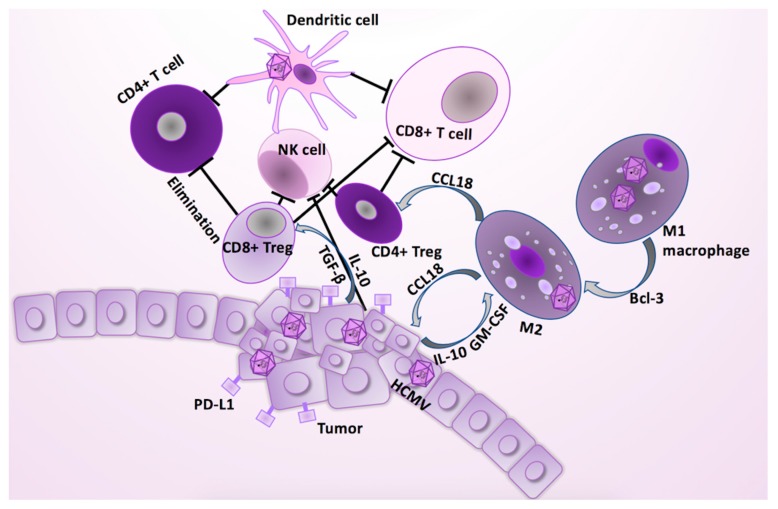Figure 3.
HCMV infection affects several cell types in the tumor. HCMV infection in epithelial cells is pro-tumorigenic, and contributes to the polarization of M1 to M2 macrophages or TAMs. The key TAM-mediated immunosuppressive effects are related to TAMs’ ability to recruit the CD4+ T regulatory (Treg) cells. In addition, tumor cells secrete immunosuppressive cytokines, such as TGF-β and IL-10, which are conductive to proliferation of the TAMs and induction of the CD8+ Treg cells [43]. TAM/Treg shift results to unfavorable, immune suppressive effects, resulting in tumorigenic tolerization and immune escape, thereby promoting cancer progression [43,53]. The CD8+ Tregs can eliminate the activated tumor specific CD4+ T cells, and inhibit actions of both CD8+ T cells and NK cells. The CD4+ Tregs can counteract both the tumor specific CD8+ CTL, and B cell activation and proliferation. HCMV infection and IL-10 secretion from the tumor cells promote an immature phenotype in dendritic cells, which contributes to the reduced antigen-presenting capacity, and increased elimination of the activated T cells through Fas/FasL and TRAIL pathways [42]. The tumor escape is supported when the aberrant activation of the T-cell receptor alone in mature T cells produces a long-lived state of functional unresponsiveness, anergy. Tumor cells express death ligands (PD-L1), of which receptors are expressed on the surface of the immune cells, contributing to the lower proliferation, cytokine production, and their cytotoxic abilities.

